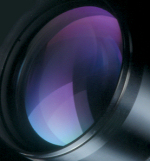
Exposure is based on three elements that interact with each other. These three elements are SHUTTER SPEED, APERTURE and ISO RATING (sensor sensitivity) and can be demonstrated in a triangle, the "Exposure Triangle".
Within the triangle different settings of these three elements can be combined to get a correct exposure for photo or video.
With shutter speed it is decided whether we want to freeze an action or show movement, with aperture it is decided whether we want a shallow depth of field or have everything in focus and with the sensor sensitivity or ISO setting the noise is higher or lower.
 |
| Shutter Speed (exposure time) - Aperture (opening) - ISO (noise) |
A higher shutter speed (shorter opening time to expose) needs a smaller f/-number (larger aperture opening) or higher ISO setting (more noise) and vice versa. (By speeding the shutter speed from 1/125 to 1/500 we need to close the aperture opening by 2 full stops.)
A lower ISO setting (less noise) needs also a smaller f/-number (larger aperture opening) or lower shutter speed and vice versa.
A higher f/-number (smaller aperture opening) needs a higher ISO setting (more noise) or a lower shutter speed and vice versa.
The optimal range of a lens is the area with the highest sharpness. This range usually starts two F-Stops above the widest opening ( the lowest F-Stop number) and goes to about f/11. For example: a lens with the aperture range of f/1.4 to f/16 the optimal range is the range between f/2.8 to f/11.


The glass surfaces of lenses are usually coated with a substance that reduces glare and internal reflections.

|
| lens with coating |